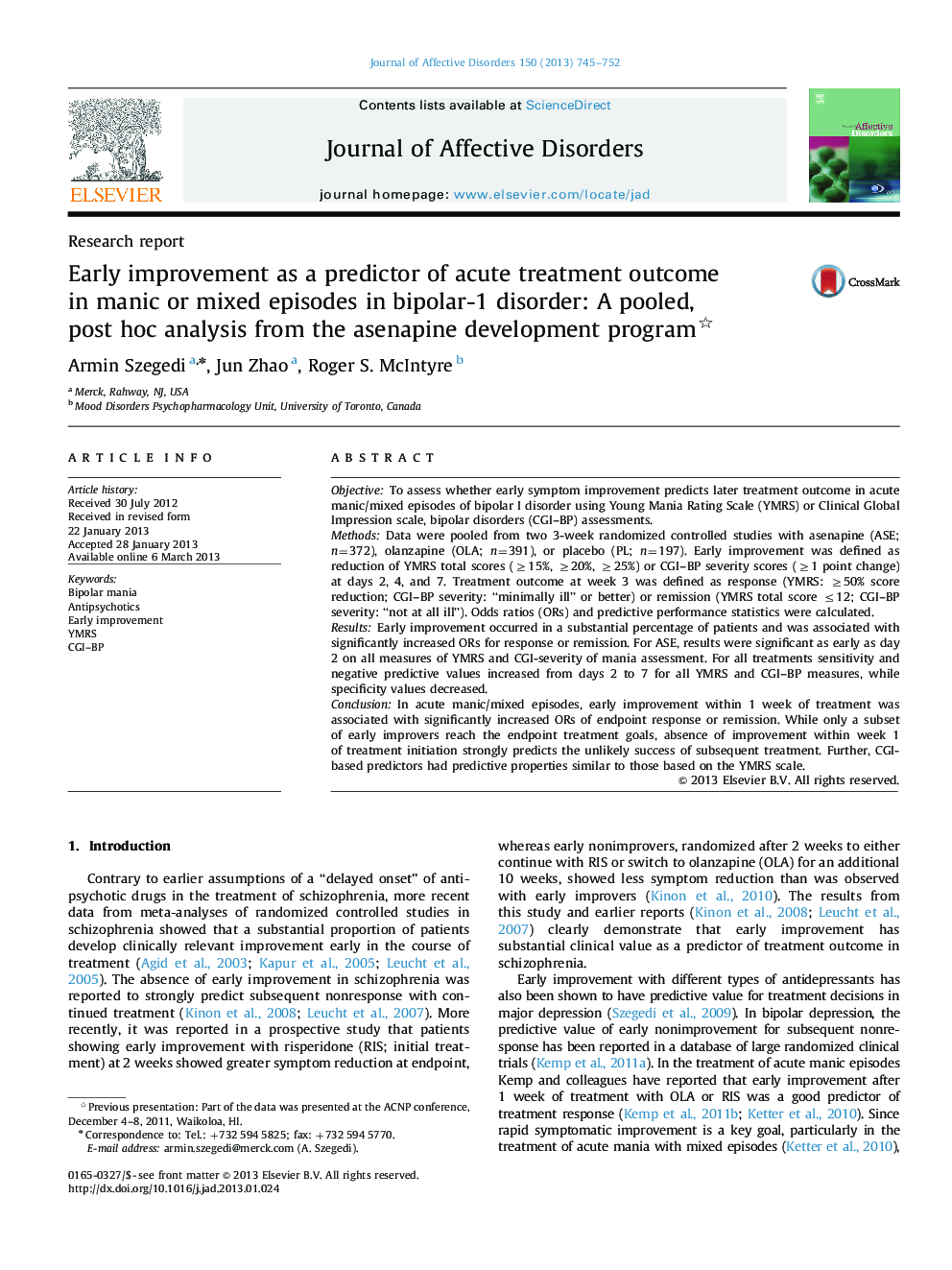| Article ID | Journal | Published Year | Pages | File Type |
|---|---|---|---|---|
| 6233561 | Journal of Affective Disorders | 2013 | 8 Pages |
ObjectiveTo assess whether early symptom improvement predicts later treatment outcome in acute manic/mixed episodes of bipolar I disorder using Young Mania Rating Scale (YMRS) or Clinical Global Impression scale, bipolar disorders (CGI-BP) assessments.MethodsData were pooled from two 3-week randomized controlled studies with asenapine (ASE; n=372), olanzapine (OLA; n=391), or placebo (PL; n=197). Early improvement was defined as reduction of YMRS total scores (â¥15%, â¥20%, â¥25%) or CGI-BP severity scores (â¥1 point change) at days 2, 4, and 7. Treatment outcome at week 3 was defined as response (YMRS: â¥50% score reduction; CGI-BP severity: “minimally ill” or better) or remission (YMRS total score â¤12; CGI-BP severity: “not at all ill”). Odds ratios (ORs) and predictive performance statistics were calculated.ResultsEarly improvement occurred in a substantial percentage of patients and was associated with significantly increased ORs for response or remission. For ASE, results were significant as early as day 2 on all measures of YMRS and CGI-severity of mania assessment. For all treatments sensitivity and negative predictive values increased from days 2 to 7 for all YMRS and CGI-BP measures, while specificity values decreased.ConclusionIn acute manic/mixed episodes, early improvement within 1 week of treatment was associated with significantly increased ORs of endpoint response or remission. While only a subset of early improvers reach the endpoint treatment goals, absence of improvement within week 1 of treatment initiation strongly predicts the unlikely success of subsequent treatment. Further, CGI-based predictors had predictive properties similar to those based on the YMRS scale.
